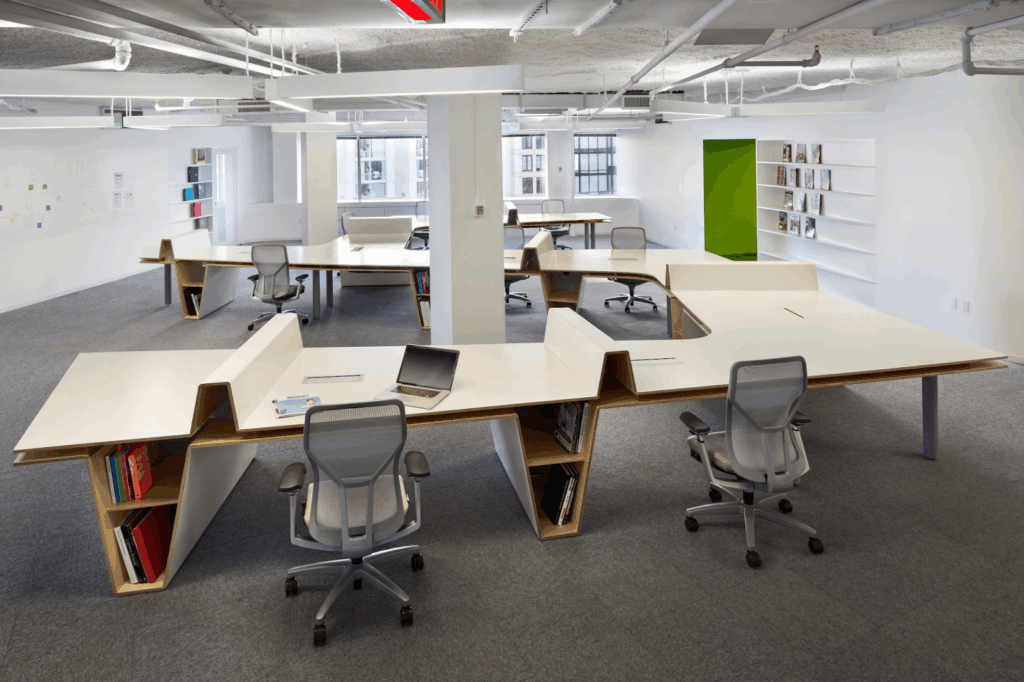A new office remodeling is a thrilling undertaking that can significantly increase efficiency, aesthetics, and employee satisfaction. But managing the expenses that come with an office remodel is a matter of careful planning and budgeting. To ensure that your office remodel remains within budget and aligns with your goals, here’s a comprehensive guide for creating a budget that prioritizes your expenses and avoids common financial pitfalls.
Knowing remodeling Costs
Costs Types
The office remodeling costs are broadly classified into indirect and direct expenses. Direct costs comprise the construction process, materials, and work. Indirect costs include the design fee, permits, and administrative costs. Knowing these categories aids in creating a more precise and complete budget.
Factors that affect the cost
There are a variety of factors that influence the costs of remodeling. The scope and size of the project have a major impact on the cost. Larger rooms and more complex projects naturally have higher costs. The quality of the materials and finishes also influences the budget. High-end materials and finishes can cost more; however, they could provide greater performance and aesthetics. In addition, the location of the project and logistics considerations could impact costs, especially if the remodeling requires complex access to the site and compliance with local laws.
The creation of a remodeling budget
Reviewing Your Goals and Needs
Begin by clearly defining the purpose of your remodel. What are the main objectives? Are you seeking to improve the efficiency of your employees, enhance aesthetics, or implement the latest technology? Setting these goals in order will aid in the efficient allocation of resources and ensure that the most important aspects of the project receive sufficient funds.
Estimates and Research Estimates
A precise budgeting process requires a thorough study. To have a real-time idea of the cost associated, get multiple estimates from suppliers and contractors. Online calculators and tools offer estimates for initial costs, but they should be accompanied by professional estimates. This helps to identify possible cost variations and helps ensure that the budget you choose to use is in line with the actual scope of your project.
Allocation of funds
The budget should be broken down into important categories, such as design, construction, furniture, and technology. Allocate funds according to the priorities you set earlier. It is also advisable to create an emergency fund to cover the unexpected costs. The general rule is to set aside 10% to 20% of your contingency plan. This will help you deal with unexpected issues such as adjustments to the design or further repairs.
Prioritizing Expenses
Essential vs. Non-Essential Upgrades
It is important to distinguish between essential and non-essential improvements. Make sure that you focus on improvements that are aligned with your goals for business and will have the biggest impact. For example, upgrading technology or increasing ergonomics in the workplace may be important in contrast to high-end finishes or decorative features can be deemed not essential. When you prioritize essential improvements, you can make sure that the most important aspects of the remodel can be completed on time and within budget.
Value vs. Cost. Value
Examine the ROI (ROI) for different improvements. Although expensive materials or intricate designs may seem attractive, it’s crucial to determine their long-term worth. For instance, purchasing efficient furnishings or lighting may be more profitable than luxurious finishes that don’t have a significant impact on the effectiveness of your operation or productivity.
Avoiding Common Financial Pitfalls
Underestimating Costs
One of the biggest problems with budgeting for remodelings is overestimating the cost. Improper cost estimates could result in budget overruns and financial stress. To prevent this from happening, make sure the estimates you make are founded upon a detailed and thorough plan. Get advice from experts and utilize reliable tools for cost estimation to help you refine your budget.
Overlooking Hidden Costs
Hidden costs can be a major factor in your budget. They could comprise demolition and site prep, and permit costs, which often are not considered when making estimates. Make sure you include these costs in your plan of action and prepare them in a way that is appropriate. Do a thorough analysis of the property and talk with experts to discover any hidden costs that might be incurred.
Delays and Changes
Project delays and scope changes can impact your budget. It’s crucial to manage any modifications with care and fully understand the impact on your finances. Create a clear plan for handling changes to the scope of your project and share these modifications with your contractor. Monitor the progress of the project regularly and take action if there are any issues to avoid delays and extra expenses.
Tips for Keeping Within Budget
Clear Communication with Contractors
Clear communication with contractors is essential to avoid misunderstandings and reduce expenses. Be sure that contracts are precise and include all aspects of remodeling. Review the progress and costs regularly with your contractor in order to swiftly solve any issues or discrepancies. Transparent communication can help you reduce costs and ensure the project is in line with your budget.
Furthermore, discussing commercial utility comparison alternatives with your contractor could give you insight into more efficient and cost-effective solutions, thereby streamlining the remodeling process and reducing long-term operational costs.
Flexible, but firm planning
Flexibility is essential; however, it should be tempered by solid budgeting. Prepare yourself to be flexible to changing circumstances, but still adhere to a strict way of preparing your budget. Be sure to evaluate trade-offs and make informed choices that are compatible with your budget limitations and goals for remodeling.
Final Remarks
The process of budgeting for an office remodel is a strategy for controlling costs and making sure that the financial resources are effectively allocated. When you know the kinds of costs involved, making an accurate budget, prioritizing important enhancements, and staying clear of the most common mistakes, you can get a great improvement that improves the workplace environment while not spending more than your budget. An attentive planning process and a proactive approach to management will aid you through the challenges of budgeting your remodeling and help you achieve the results you want to achieve.


